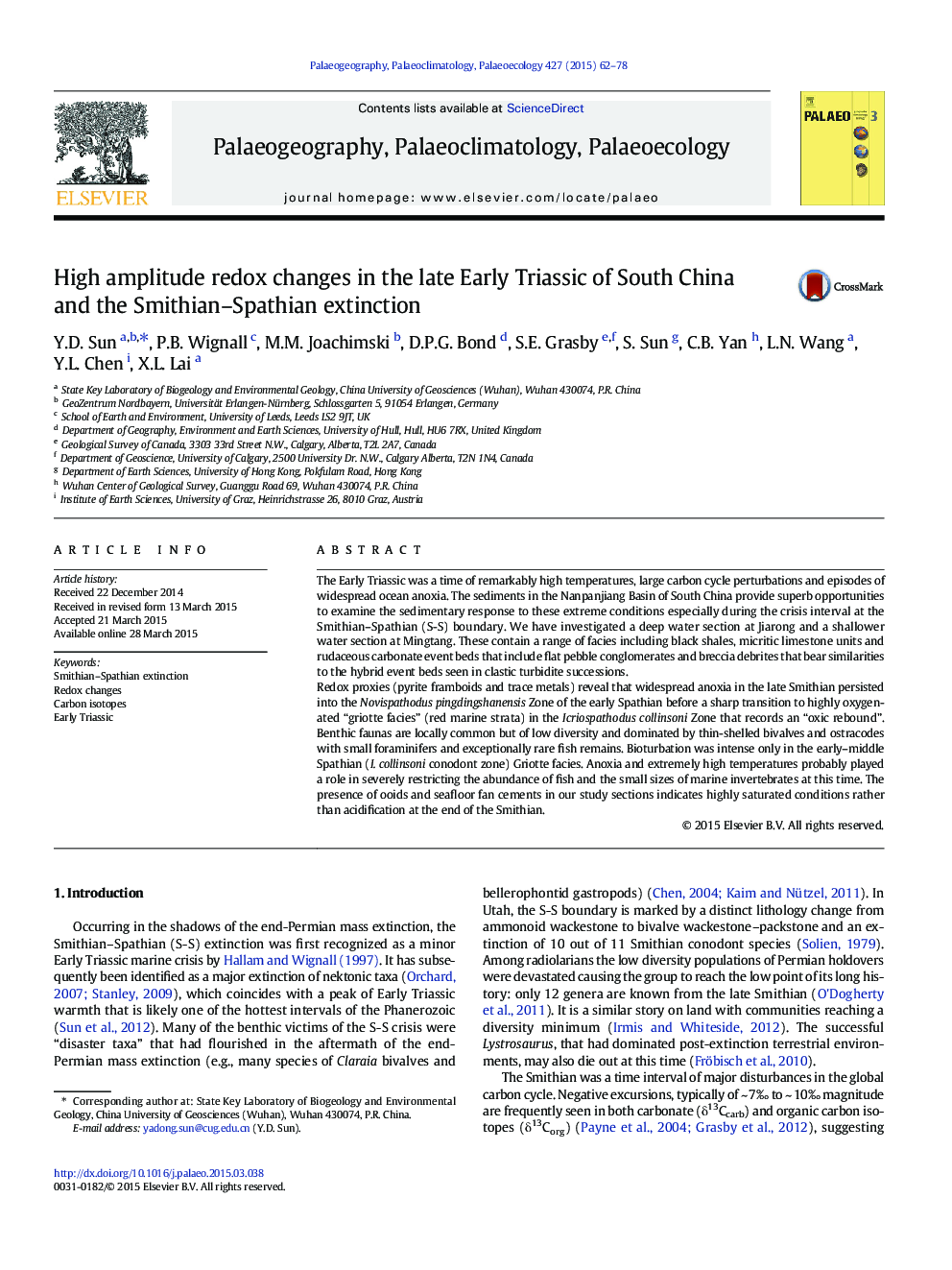| کد مقاله | کد نشریه | سال انتشار | مقاله انگلیسی | نسخه تمام متن |
|---|---|---|---|---|
| 6349779 | 1622163 | 2015 | 17 صفحه PDF | دانلود رایگان |
عنوان انگلیسی مقاله ISI
High amplitude redox changes in the late Early Triassic of South China and the Smithian-Spathian extinction
دانلود مقاله + سفارش ترجمه
دانلود مقاله ISI انگلیسی
رایگان برای ایرانیان
موضوعات مرتبط
مهندسی و علوم پایه
علوم زمین و سیارات
فرآیندهای سطح زمین
پیش نمایش صفحه اول مقاله

چکیده انگلیسی
Redox proxies (pyrite framboids and trace metals) reveal that widespread anoxia in the late Smithian persisted into the Novispathodus pingdingshanensis Zone of the early Spathian before a sharp transition to highly oxygenated “griotte facies” (red marine strata) in the Icriospathodus collinsoni Zone that records an “oxic rebound”. Benthic faunas are locally common but of low diversity and dominated by thin-shelled bivalves and ostracodes with small foraminifers and exceptionally rare fish remains. Bioturbation was intense only in the early-middle Spathian (I. collinsoni conodont zone) Griotte facies. Anoxia and extremely high temperatures probably played a role in severely restricting the abundance of fish and the small sizes of marine invertebrates at this time. The presence of ooids and seafloor fan cements in our study sections indicates highly saturated conditions rather than acidification at the end of the Smithian.
ناشر
Database: Elsevier - ScienceDirect (ساینس دایرکت)
Journal: Palaeogeography, Palaeoclimatology, Palaeoecology - Volume 427, 1 June 2015, Pages 62-78
Journal: Palaeogeography, Palaeoclimatology, Palaeoecology - Volume 427, 1 June 2015, Pages 62-78
نویسندگان
Y.D. Sun, P.B. Wignall, M.M. Joachimski, D.P.G. Bond, S.E. Grasby, S. Sun, C.B. Yan, L.N. Wang, Y.L. Chen, X.L. Lai,